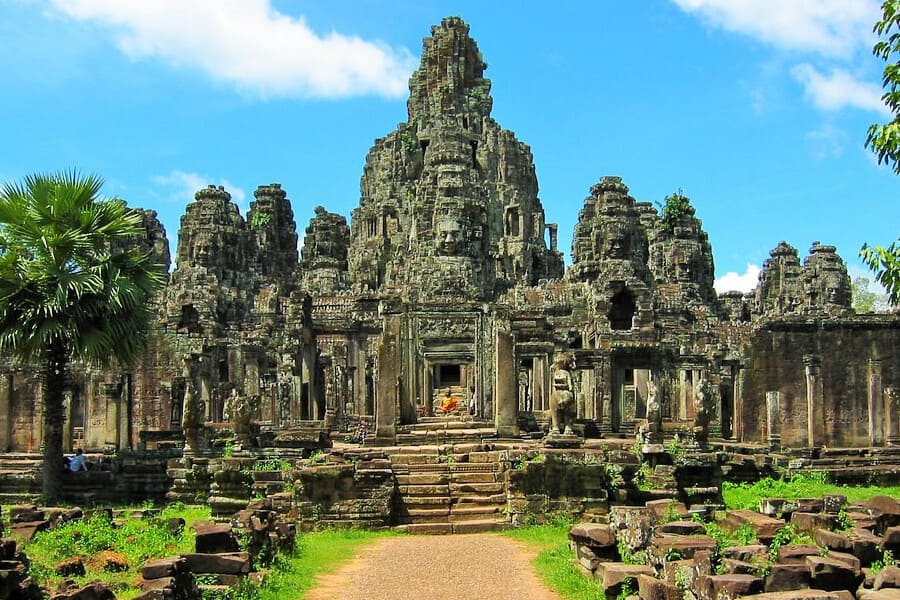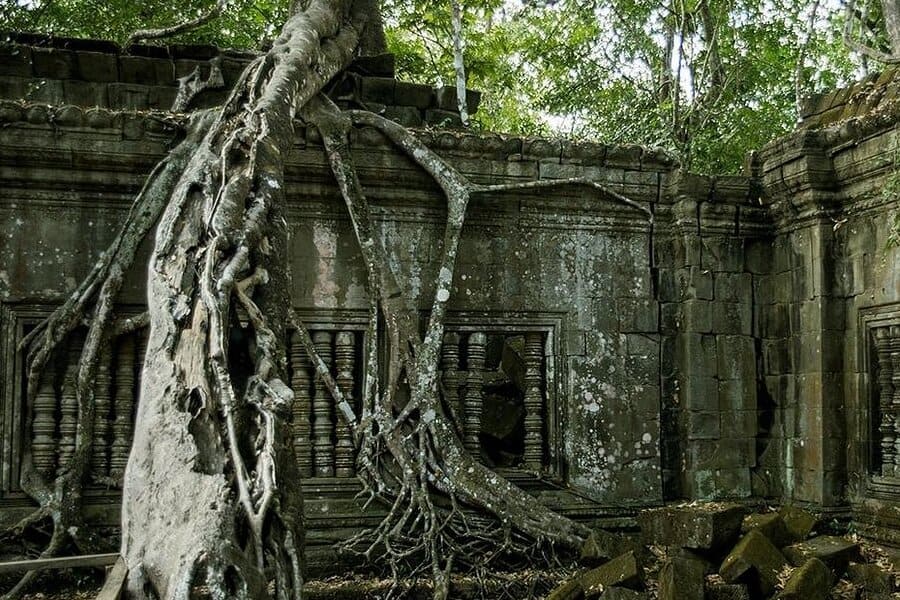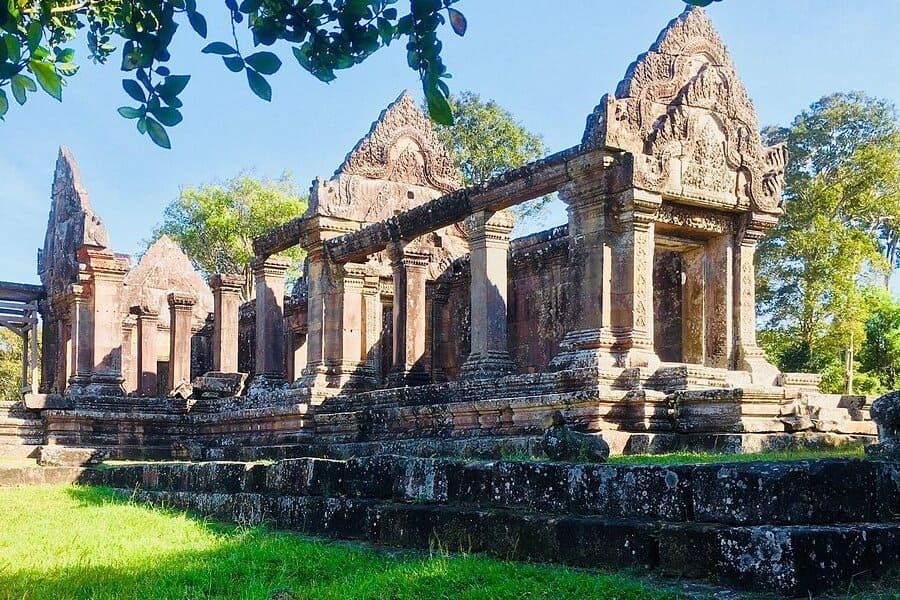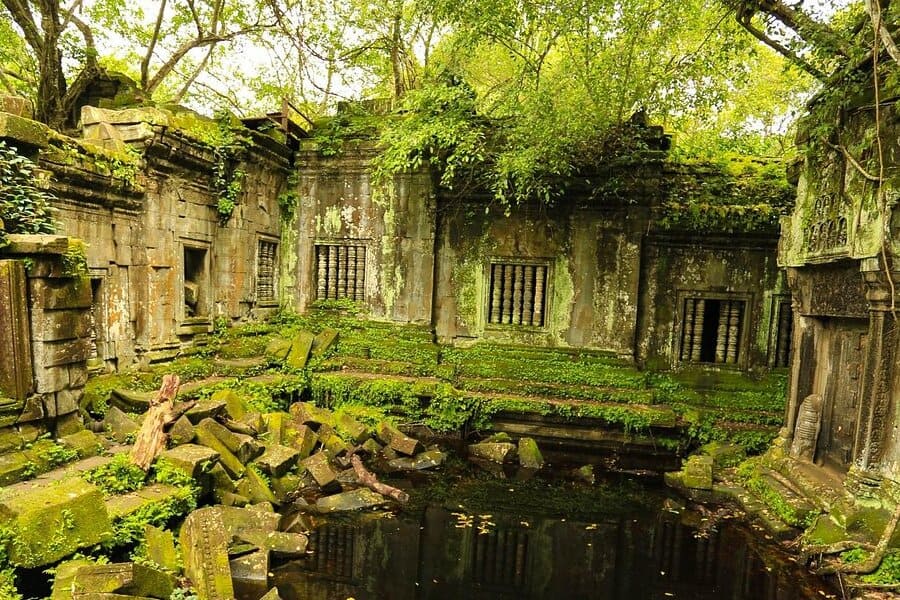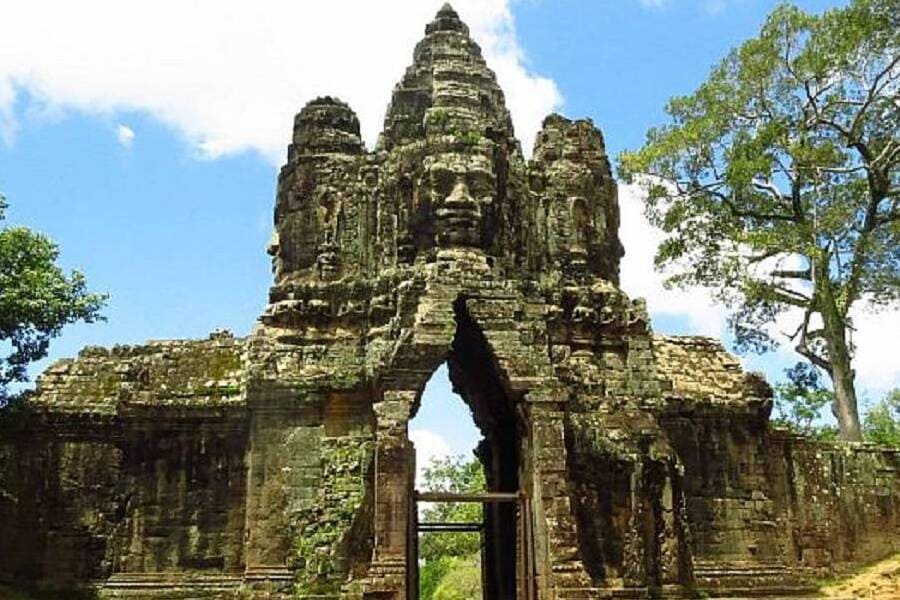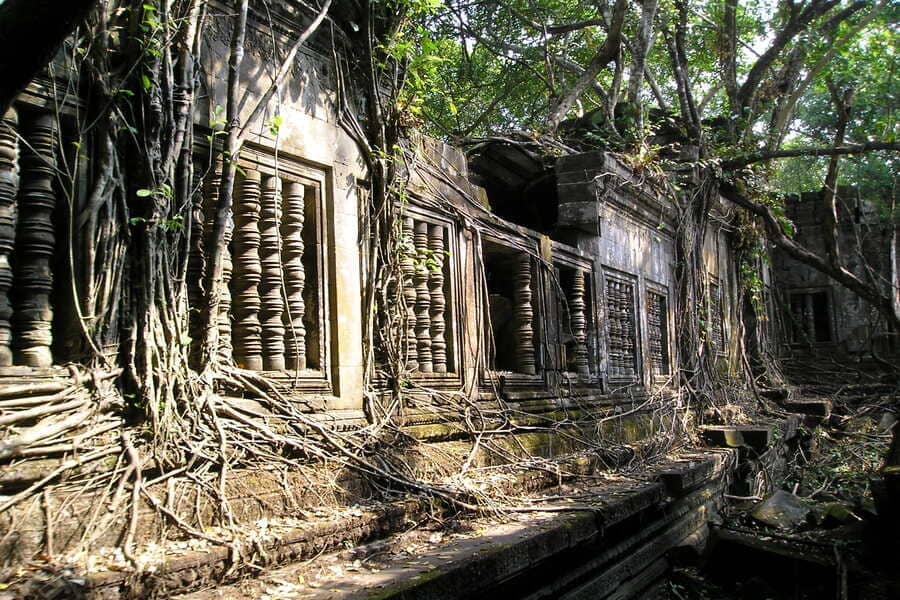Embark on a captivating journey beyond the famed Angkor Wat and delve into the hidden treasures of Cambodia's lesser-known archaeological sites. Join us on a cambodia tour that ventures off the beaten path to explore the rich history and cultural heritage that lie scattered across this enchanting land. From ancient temple complexes tucked away in dense jungles to remote ruins steeped in mystery, our expedition promises to unveil the secrets of Cambodia's past.
Contents
The rich history of Cambodia
Cambodia's rich history is a tapestry woven from the threads of ancient civilizations, powerful empires, and resilient cultures. Tracing its roots back to the early kingdoms of Funan and Chenla, which flourished from the 1st to the 6th centuries, Cambodia emerged as a major center of culture and commerce in Southeast Asia.
The zenith of its historical significance came with the rise of the Khmer Empire, which reigned from the 9th to the 15th centuries and gave birth to iconic architectural marvels like Angkor Wat, the world's largest religious monument. These ancient sites, rich with intricate carvings and grandiose structures, are not just remnants of a glorious past but are living embodiments of the Khmer people's ingenuity, spirituality, and artistic excellence.
They hold immense cultural significance for Cambodians, serving as symbols of national pride and continuity. Globally, Cambodia's historical sites are treasured as UNESCO World Heritage Sites, offering invaluable insights into ancient engineering, religious practices, and societal organization. Preserving these sites is crucial, not only for maintaining Cambodia's cultural identity but also for enriching global heritage and understanding the shared human past.
Lesser-Known Archaeological Sites in Cambodia
Banteay Chhmar
Banteay Chhmar, an enigmatic and sprawling temple complex, was commissioned by King Jayavarman VII in the late 12th to early 13th centuries. It stands as one of the most important and least understood temples of the Khmer Empire, constructed during a period of prolific building under Jayavarman VII, who is also known for the iconic Bayon and Ta Prohm temples. The name "Banteay Chhmar" translates to "Citadel of the Cats," though the reason behind this name remains a mystery.
Banteay Chhmar is renowned for its intricate and extensive bas-reliefs that rival those found at Angkor Wat. These detailed carvings depict scenes of daily life, military battles, and religious processions, providing a vivid glimpse into the history and culture of the Khmer Empire. The temple complex features the face towers reminiscent of the Bayon style, with serene faces believed to represent the bodhisattva Avalokiteshvara, symbolizing compassion.
As one of the largest and most complex temple sites from the Khmer era, Banteay Chhmar is of significant cultural and historical importance. It offers a less commercialized and more authentic glimpse into Cambodia's glorious past. The ongoing efforts to preserve the temple also underscore the importance of maintaining this heritage for future generations. For visitors, Banteay Chhmar provides a unique opportunity to experience the grandeur of Khmer architecture and the rich history of Cambodia in a setting that feels both ancient and untouched.
Koh Ker
Koh Ker, located in the northern part of Cambodia, stands as a testament to the grandeur of the Khmer Empire. This remote archaeological site, nestled amidst lush forests, boasts a collection of towering temple complexes and intricately carved sandstone structures dating back to the 10th century.
Koh Ker served as the capital of the Khmer Empire for a brief period under King Jayavarman IV, who constructed many of its magnificent temples, including the iconic Prasat Thom, characterized by its seven-tiered pyramid and commanding presence on the landscape.
Visitors to Koh Ker can explore a variety of temples, ranging from small shrines to imposing monuments adorned with intricate bas-reliefs depicting Hindu deities and mythical creatures. The site's remote location adds to its allure, offering a sense of discovery and adventure for those willing to venture off the beaten path.
Koh Ker provides a captivating glimpse into Cambodia's rich history and architectural heritage, making it a must-visit destination for history enthusiasts and curious travelers alike.
Preah Vihear
Preah Vihear, a UNESCO World Heritage Site nestled atop a cliff in northern Cambodia, is a masterpiece of ancient Khmer architecture and spirituality. This awe-inspiring temple complex is dedicated to the Hindu god Shiva and is perched on the edge of the Dângrêk Mountains, offering panoramic views of the Cambodian plains below.
Built during the Khmer Empire's peak in the 11th and 12th centuries, Preah Vihear is renowned for its stunning architectural design, intricate carvings, and symbolic significance. Visitors to Preah Vihear can marvel at the temple's impressive layout, characterized by its series of sanctuaries, courtyards, and pavilions connected by staircases and galleries.
The site's serene ambiance and breathtaking vistas make it a popular pilgrimage destination and a captivating archaeological wonder. Preah Vihear's rich history and spiritual significance, combined with its spectacular setting, continue to draw visitors from around the world, offering a profound glimpse into Cambodia's ancient past and cultural heritage.
Beng Mealea temple
Beng Mealea, an enchanting temple hidden amidst the Cambodian jungle, stands as a testament to the grandeur of the Khmer Empire. Located about 40 kilometers east of the Angkor Archaeological Park, Beng Mealea offers visitors a unique and adventurous journey back in time.
Built in the 12th century during the reign of King Suryavarman II, this sprawling temple complex showcases exquisite stone carvings, intricate bas-reliefs, and impressive architectural features, reminiscent of the more famous Angkor Wat.
However, unlike the meticulously restored temples of Angkor, Beng Mealea remains largely unrestored and engulfed by lush vegetation, allowing visitors to experience the allure of ancient ruins in their natural state.
Exploring Beng Mealea feels like embarking on a jungle adventure, as visitors navigate through moss-covered stones, climb over fallen pillars, and wander through dimly lit corridors adorned with intricate carvings.
The temple's remote location and atmospheric ambiance evoke a sense of discovery and wonder, making it a favorite destination for intrepid travelers and photographers seeking to capture the mystique of Cambodia's ancient past.
Sambor Prei Kuk
Sambor Prei Kuk, located in the central part of Cambodia, is a pre-Angkorian archaeological site that dates back to the 6th and 7th centuries. It served as the capital of the Chenla Kingdom before the rise of the Khmer Empire. Known as Isanapura during its heyday, Sambor Prei Kuk is one of the earliest examples of complex urban planning and monumental architecture in Southeast Asia.
The site is renowned for its well-preserved brick temples, which exhibit distinct pre-Angkorian architectural styles. The most notable features of Sambor Prei Kuk are its octagonal towers, which are unique in Khmer architecture. These towers, with their intricate carvings and sandstone lintels, demonstrate an advanced level of artistic and architectural sophistication.
Sambor Prei Kuk is a vital link in understanding the development of Khmer architecture and urban planning. Its temples predate those of Angkor by several centuries, providing valuable insights into the early stages of Khmer civilization. The site's intricate carvings and unique architectural features, such as the octagonal towers, reflect the rich cultural and religious life of the period.
For visitors, Sambor Prei Kuk offers a fascinating journey into the depths of Cambodia's ancient past, showcasing the ingenuity and artistry that laid the foundations for the later grandeur of Angkor. The site stands as a testament to the enduring legacy of the Chenla Kingdom and its contributions to Southeast Asian history.
Practical Information for Visitors to Explore Lesser-Known Archaeological Sites
Best times to visit
The dry season is the best time to visit Cambodia’s archaeological sites. During these months, the weather is cooler and less humid, making it more comfortable to explore outdoor attractions. The peak tourist season is from December to February, so expect more visitors during these months.
How to get to lesser-known archaeological sites?
Banteay Chhmar: Located in Banteay Meanchey province, approximately 160 kilometers from Siem Reap.
- By Car: The most convenient way to get there is by private car or taxi from Siem Reap, which takes about 3-4 hours.
- By Bus: Buses from Siem Reap to Sisophon, followed by a local taxi or motorbike ride to the site, are available but less direct.
Koh Ker: Situated about 120 kilometers northeast of Siem Reap.
- By Car: A private car or taxi can take you directly to Koh Ker in around 2.5 to 3 hours.
- By Tour: Organized tours from Siem Reap are available, often combining a visit to Beng Mealea.
Sambor Prei Kuk: Located 30 kilometers north of Kampong Thom.
- By Car: From Phnom Penh or Siem Reap, a private car or taxi can reach Kampong Thom in about 3-4 hours, followed by a short drive to the site.
- By Bus: Regular buses run between Phnom Penh and Siem Reap, stopping at Kampong Thom. From there, hire a tuk-tuk or motorbike to the temples.
Preah Vihear: Perched on a cliff in the Dângrêk Mountains, near the Thai border.
- By Car: From Siem Reap, it’s a 4-5 hour drive by private car or taxi.
- By Bus: Buses from Siem Reap to Sra Em, then a local taxi or motorbike for the final 30 kilometers.
Beng Mealea: Located 40 kilometers east of Angkor Wat.
- By Car: A private car or taxi can take you from Siem Reap to Beng Mealea in about 1.5 hours.
- By Tour: Many tours from Siem Reap include Beng Mealea as part of their itinerary.
What to bring to lesser-known archaeological sites?
- Comfortable Clothing: Lightweight, breathable clothing suitable for warm weather. Long sleeves and pants are recommended for protection against the sun and insects.
- Sturdy Footwear: Good walking shoes or hiking boots for navigating uneven terrain and ruins.
- Sun Protection: Sunscreen, a wide-brimmed hat, and sunglasses to protect against the strong tropical sun.
- Insect Repellent: Essential to ward off mosquitoes and other insects, especially during the rainy season.
- Water and Snacks: Bring plenty of water to stay hydrated, and snacks for energy, as amenities can be limited near lesser-known sites.
- Camera and Binoculars: To capture the beauty of the temples and surrounding nature.
- Local Currency: Carry Cambodian riel or US dollars for entrance fees, tips, and local purchases.
- Guidebook or Maps: Useful for self-guided tours and understanding the historical context of the sites.
- Respectful Attire: Modest clothing is advised when visiting religious and historical sites to show respect for local customs.
While Angkor Wat stands as a monumental symbol of Khmer ingenuity, the lesser-known sites like Banteay Chhmar, Koh Ker, Sambor Prei Kuk, Preah Vihear, and Beng Mealea offer equally fascinating glimpses into the country's ancient past. These sites, each with their unique stories and architectural marvels, provide a more intimate and adventurous experience, away from the crowds. Exploring these hidden gems not only enriches our understanding of Cambodia's history but also supports the preservation of these irreplaceable treasures for future generations.

